Since March 2022, the number of football accounts (leagues, clubs, active & retired players) that have reached the milestone of 100 million combined social media followers has doubled from 11 to 23. Over the same time frame, the world’s most followed athlete, Cristiano Ronaldo, has gained over 330 million new followers. Statistics show that social media is still the best, most effective option when it comes to interacting with large, global fan bases, despite the social media space being extremely turbulent, with change as the only constant.
In this sequel, we take a look at the social media landscape of football clubs and players after the 2022 FIFA World CupTM and the January transfer window, showcasing the best-performing entities while also identifying the trends and drivers behind the figures.
Football’s favourite social media platform
Social media is often used as a general term when it comes to the online presence of football stakeholders, but the prominence and role of each platform varies significantly.
For football, Instagram is the leading social network, providing a perfect platform via its visual characteristics, direct conversion of sponsorship & endorsement deals and over 1 billion monthly active users. Instagram’s position can be described as dominant among football players with almost two thirds of the combined follower-ship of the Top 10 most popular players coming from this platform.
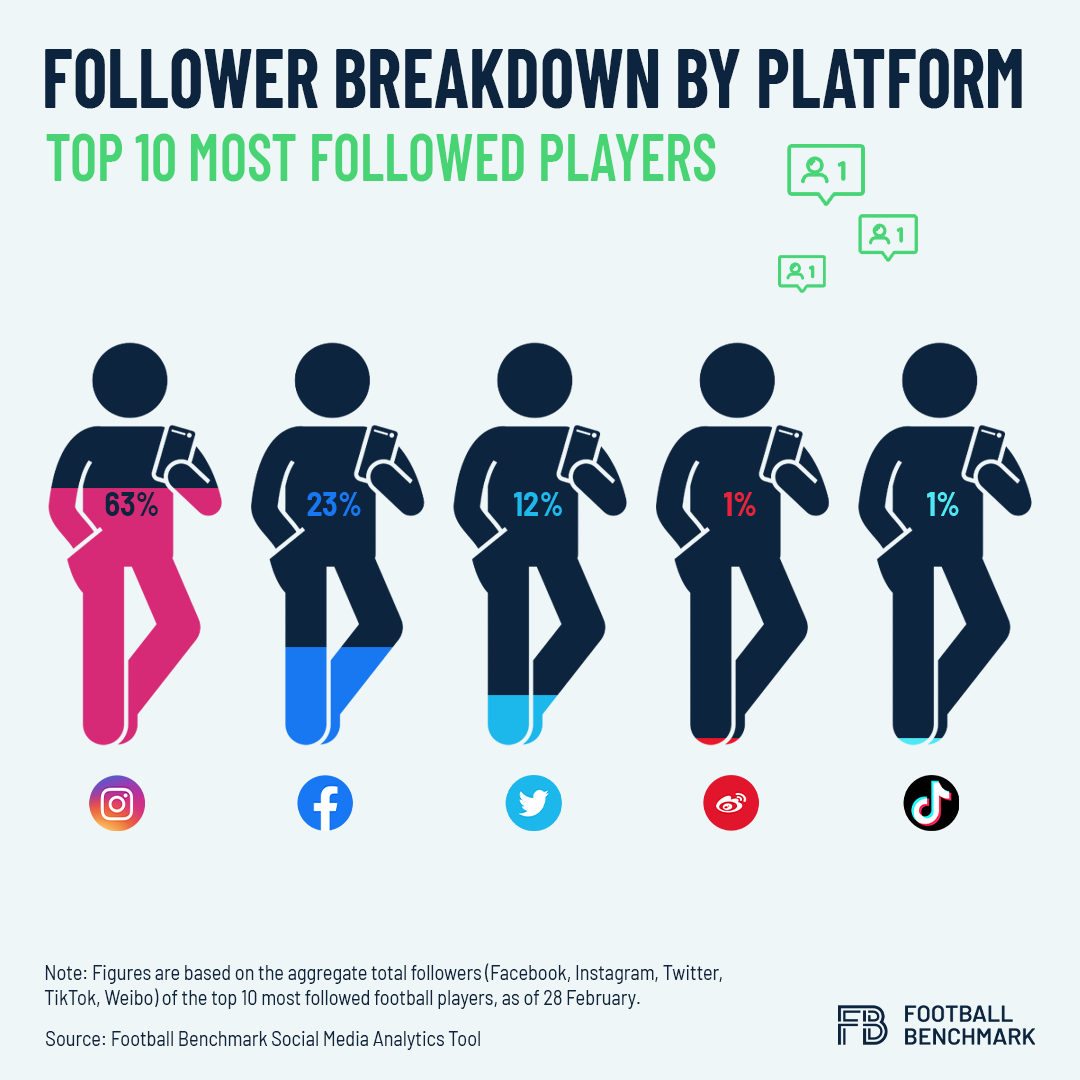
The situation is a bit different among clubs with multiple platforms playing a key role – looking at the combined figures of the Top 10, the share of Facebook and Instagram is basically the same at around 34%, while both Twitter and TikTok are responsible for over 10% of club followers.
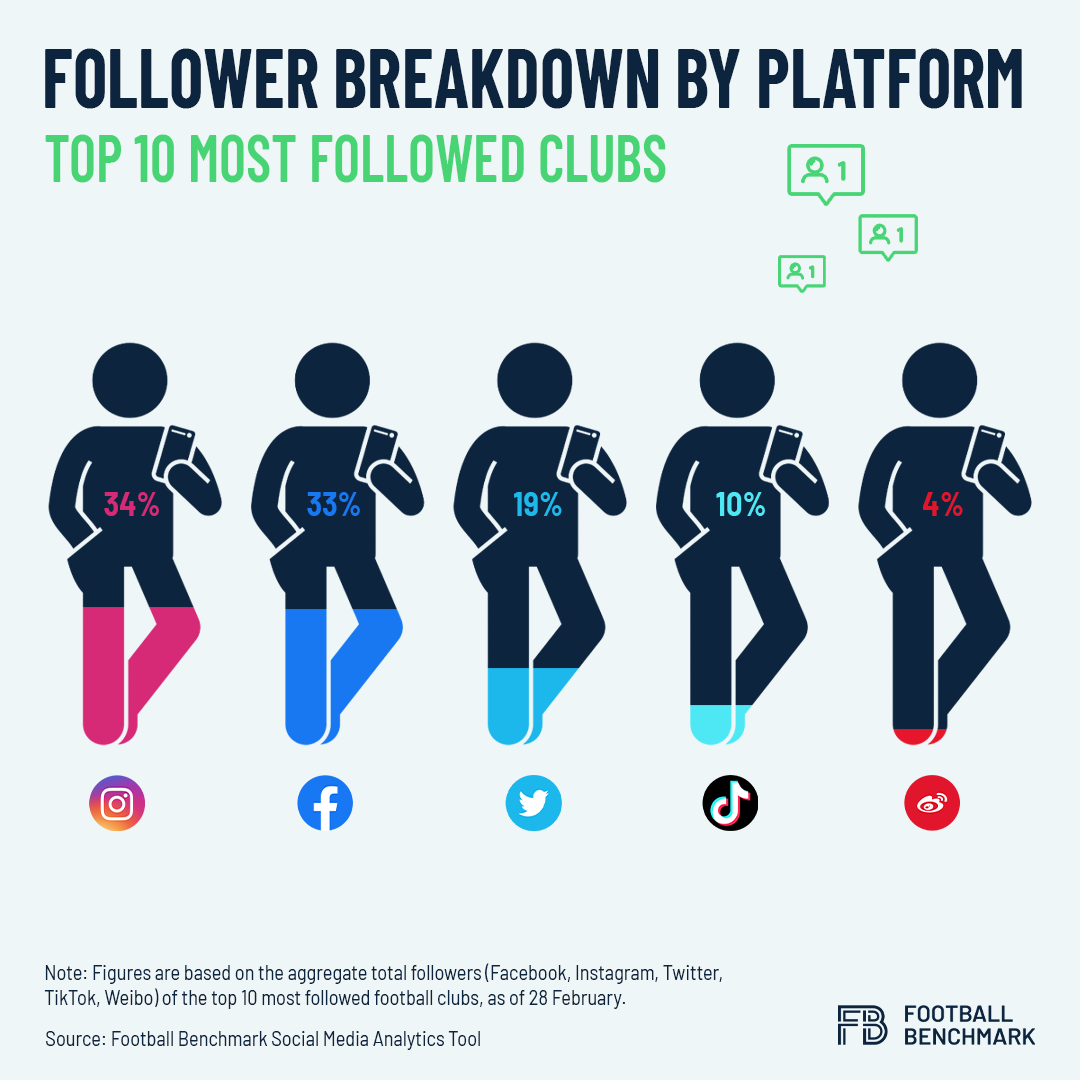
The conclusive winner of the recent past, TikTok has seen massive growth, both in terms of user numbers and football club activity. Interacting with the new generation of fans is a key strategic pillar for clubs, thus TikTok is the platform with the youngest audience (25% of the users are between the ages of 10-19 based on US statistics). Subsequently, it is not a surprise that it is the fastest growing platform – since the start of 2022, the Top 10 clubs have increased their followers by more than 120%, while no other platforms have produced a growth percentage over 30%. Moreover, TikTok also sits at the top in terms of absolute growth in this 10-club sample, with a total of 118 million new followers gained since January 2022. That popularity is also reflected in data from the first two months of 2023, as the best-performing clubs have already generated over 100 million video views.
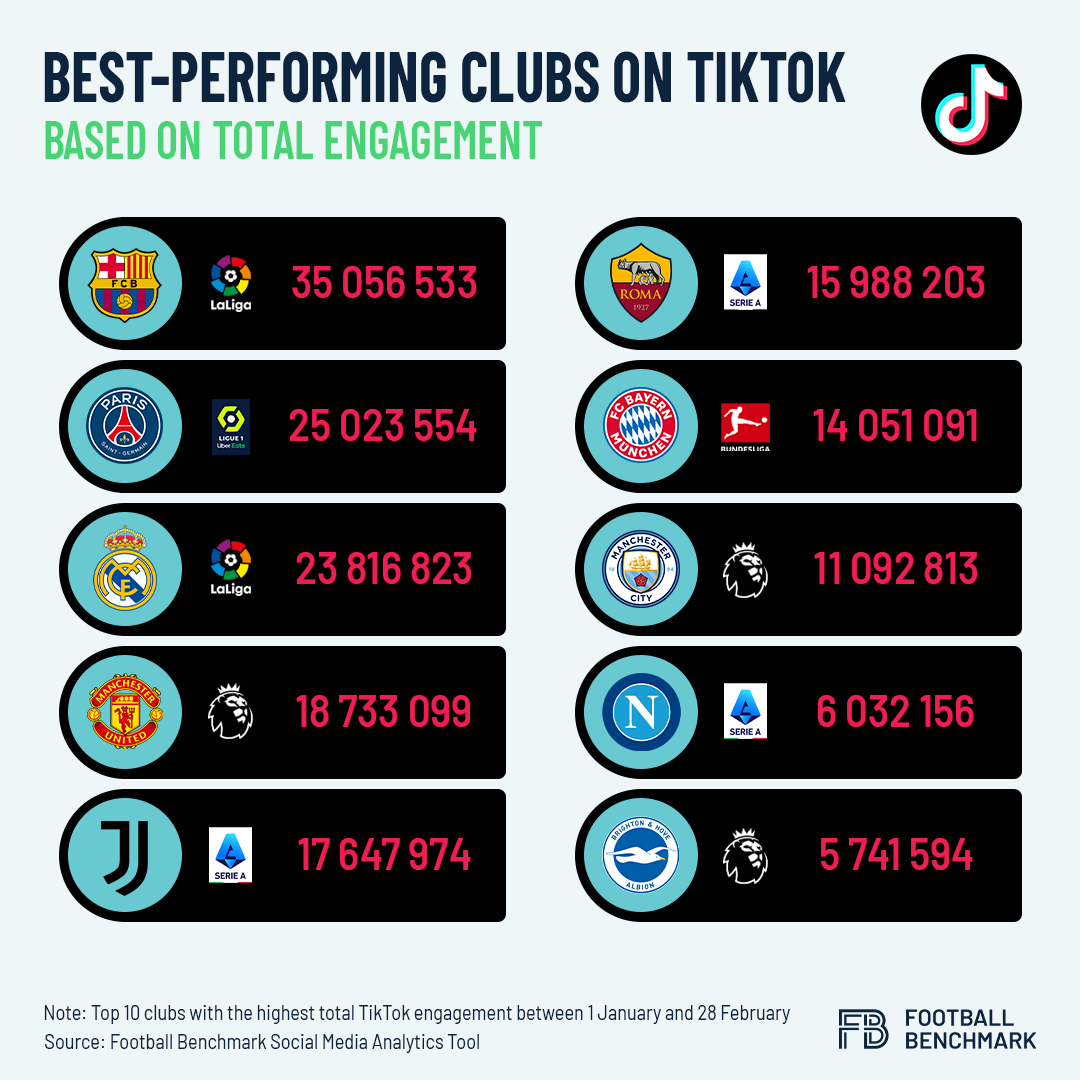
Good sporting performance insufficient for social media success
While on-pitch success is certainly a factor behind the social media performance of players, the latter is driven by a combination of factors such as their personality, media appearances, existing contracts with global brands or the brand strength of the player’s club. If we examine the social media follower count of the Top 10 most valuable players and the overall Top 10 by followers, we see markedly different lists.
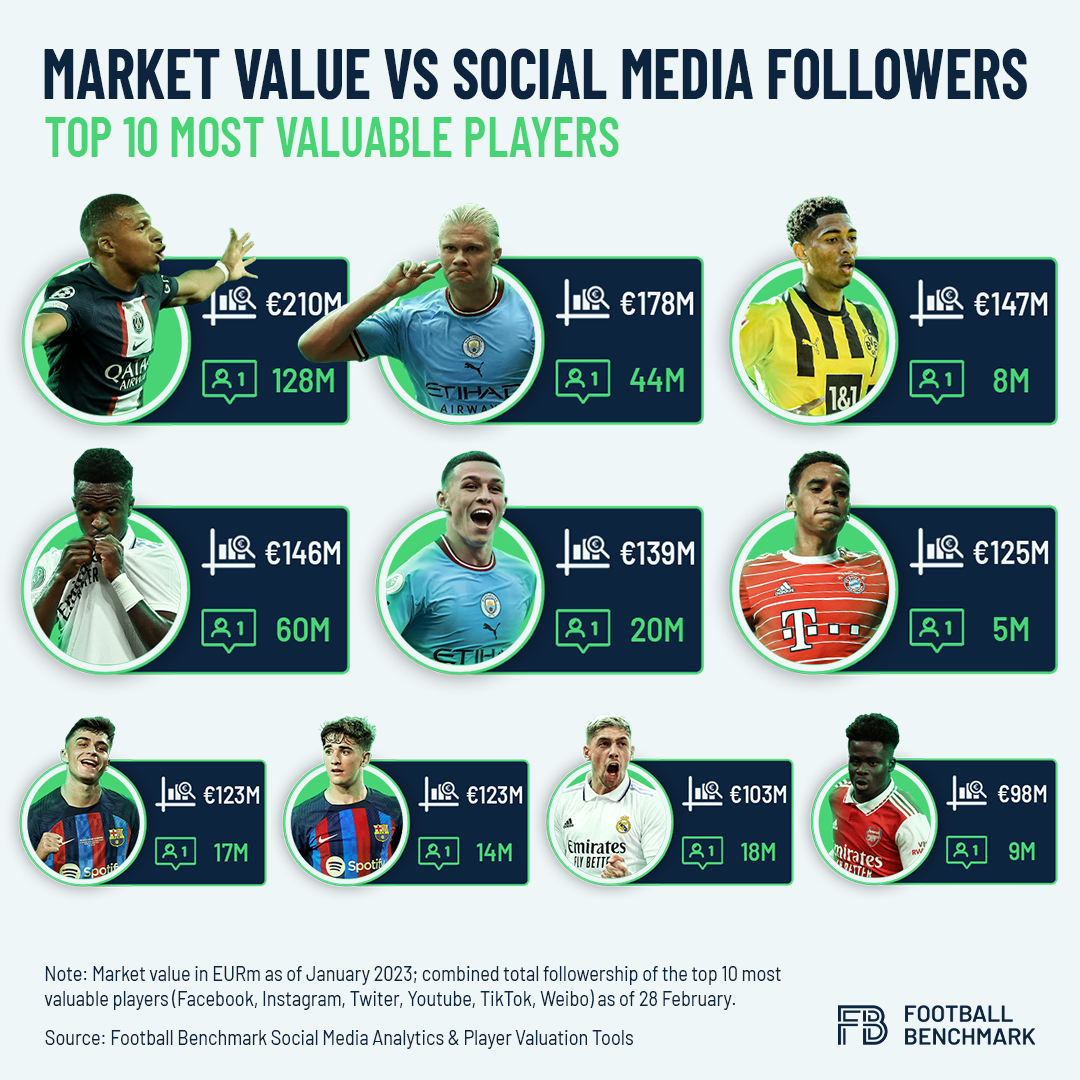
The overall list currently is and will be dominated by Cristiano Ronaldo until he hangs up his boots as he is nearing 500 million combined total followers. With close to 300 million followers, Lionel Messi is in second place, despite Neymar getting ever closer to that figure, with a chance of overtaking the Argentine legend in the future.
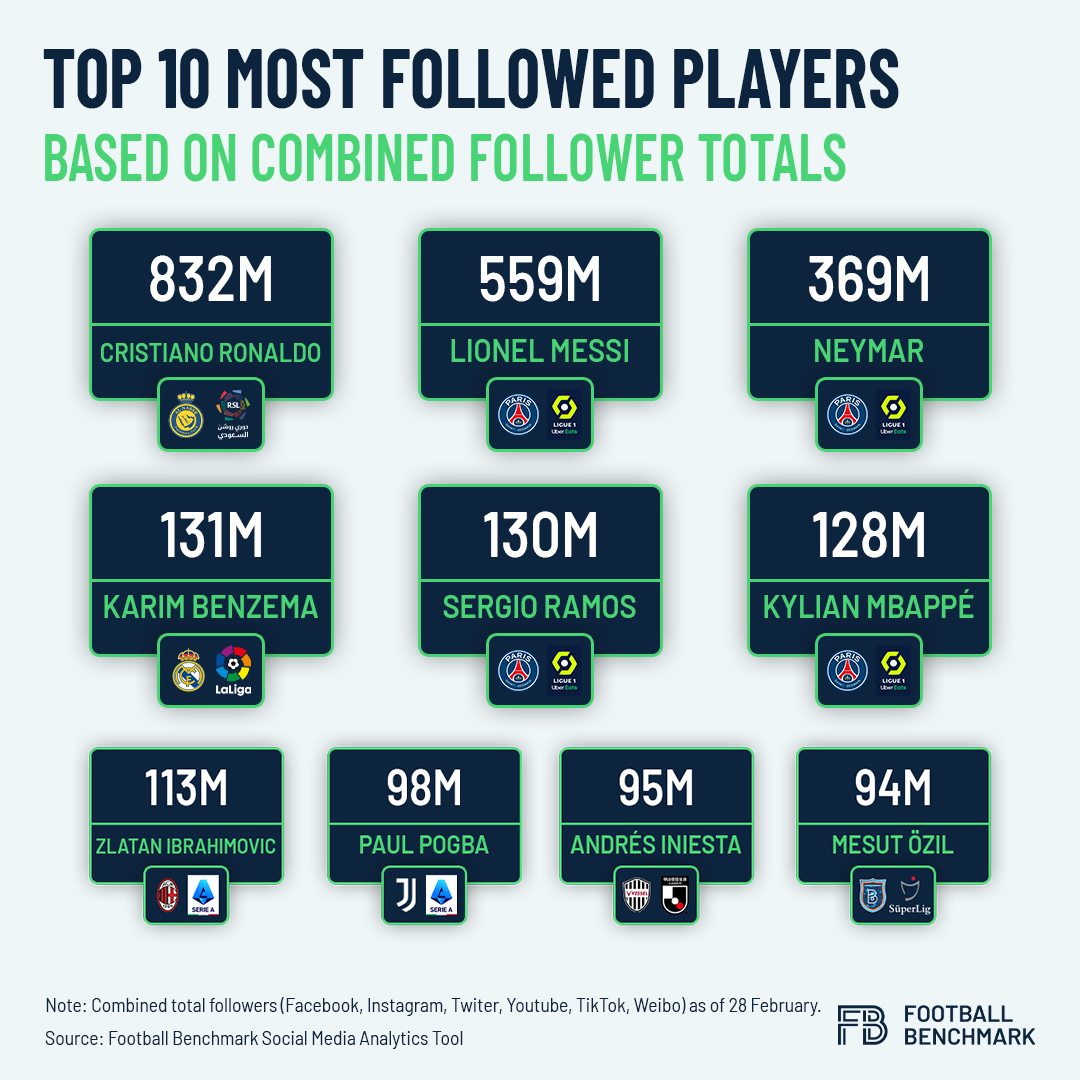
In terms of this year’s performance, we can observe the major impact of the January transfer market – Leandro Trossard has almost tripled his follower base as Arsenal’s fans have welcomed their new signing, while other new joiners such as Benoît Badiashile, Marcel Sabitzer or João Cancelo also feature on the list. Recent form and appearance in the transfer gossip columns are also good drivers for growth, with players such as Victor Osimhen or Jude Bellingham stealing the limelight in recent months. On the other hand, the appearance of Nicolò Zaniolo reinforces the importance of big local markets with passionate fan bases, such as Turkey. After his transfer to Galatasaray, his follower count increased by more than 350,000 on Instagram within just one month.
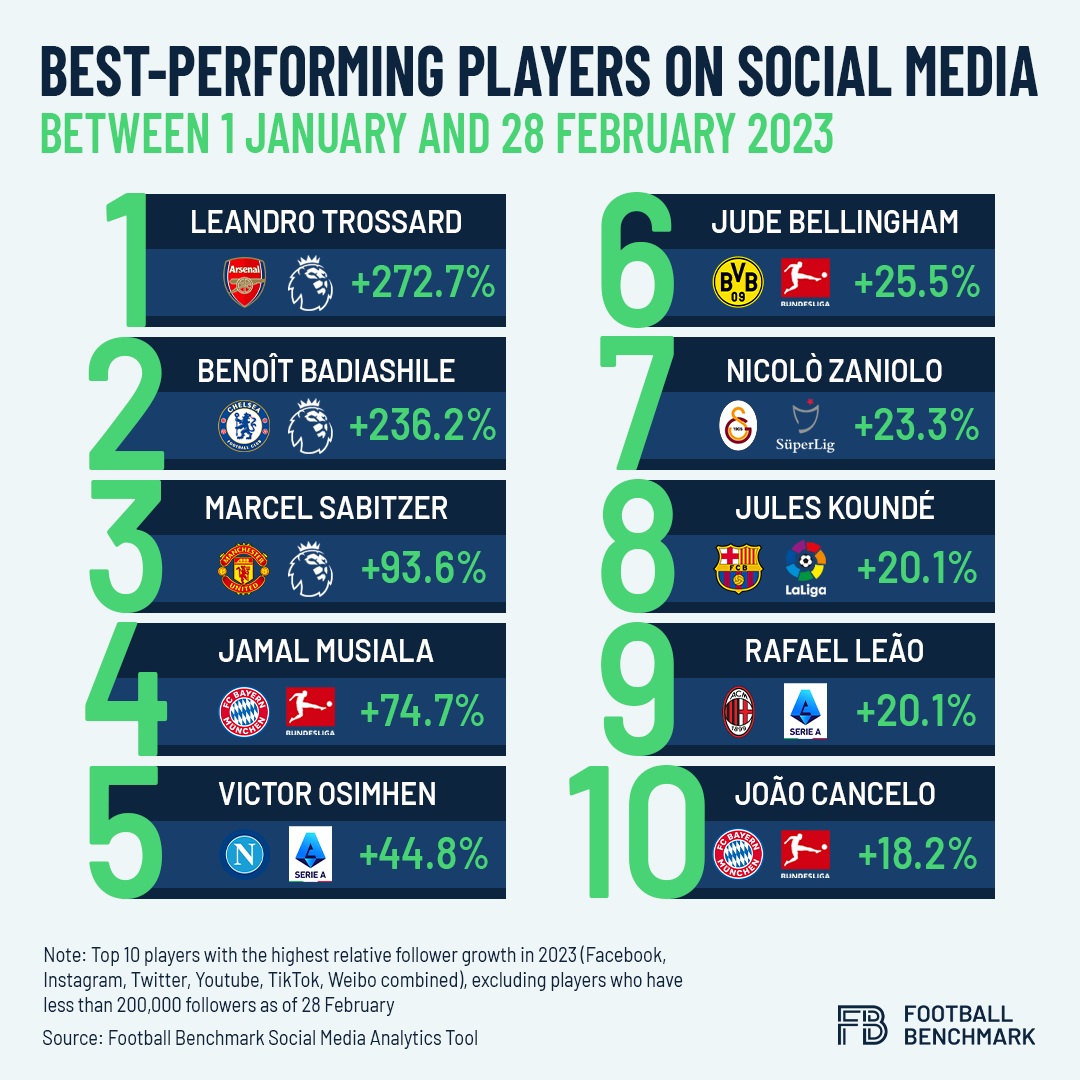
Looking at the clubs’ 2023 performance, the personal brand value of Cristiano Ronaldo is on full display. After having signed the Portuguese icon, Al-Nassr FC managed to gain the most new followers, almost doubling their 1st January count and reaching over 20 million combined followers. In the wake of the Saudi club, we see the usual suspects who also rank among the top in terms of total followers: Real Madrid CF are capitalising on their historic brand, while PSG is climbing higher and higher, driven by factors such as the personal brand of superstars like Kylian Mbappé or Sergio Ramos.
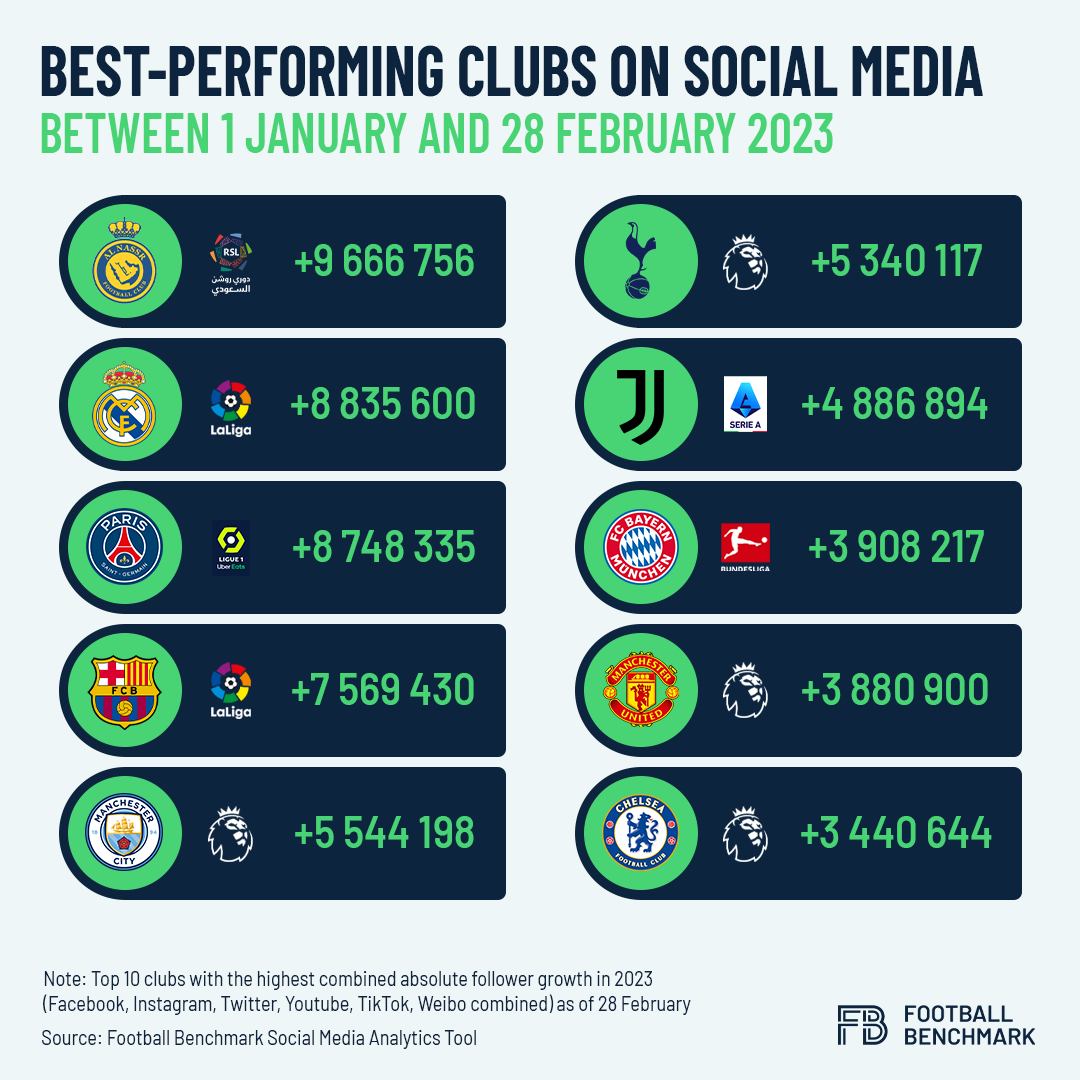
The Ronaldo and Messi social media galaxy
Focusing on engagement numbers on Instagram in 2023, the duo of Cristiano Ronaldo and Lionel Messi are once again head and shoulders above the rest of the field as both of them have generated over 200 million total engagements, with no other players above the 100 million threshold. They are followed by a couple of younger stars, such as Kylian Mbappé, Vinícius Júnior and Marcus Rashford who are all among the best players of the season so far. Still, they will need more than world-class on-pitch performances to catch their “predecessors” on the social media pitch. In terms of post frequency, players generally post 10-15 times a month, mostly images rather than videos.
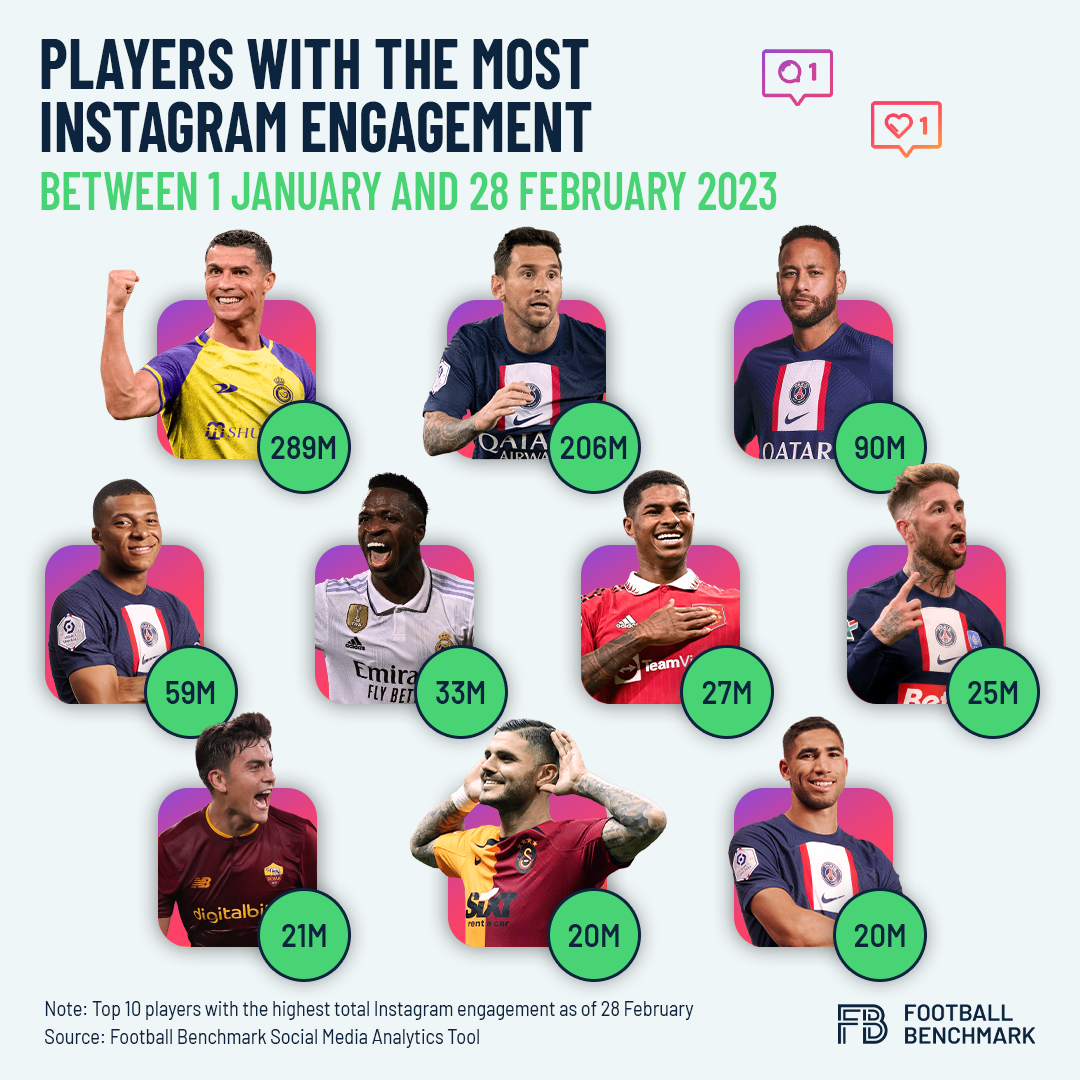
Looking at the same indicators for clubs, Al-Nassr are once again among the high fliers due to Ronaldo’s arrival, behind only the two Spanish giants and PSG, who are shrinking the gap with their Spanish counterparts. The Top 10 is rounded out by four English Premier League clubs and one club from Brazil and Turkey each, once again showcasing that the impact of large local markets can be significant in terms of social media engagement.
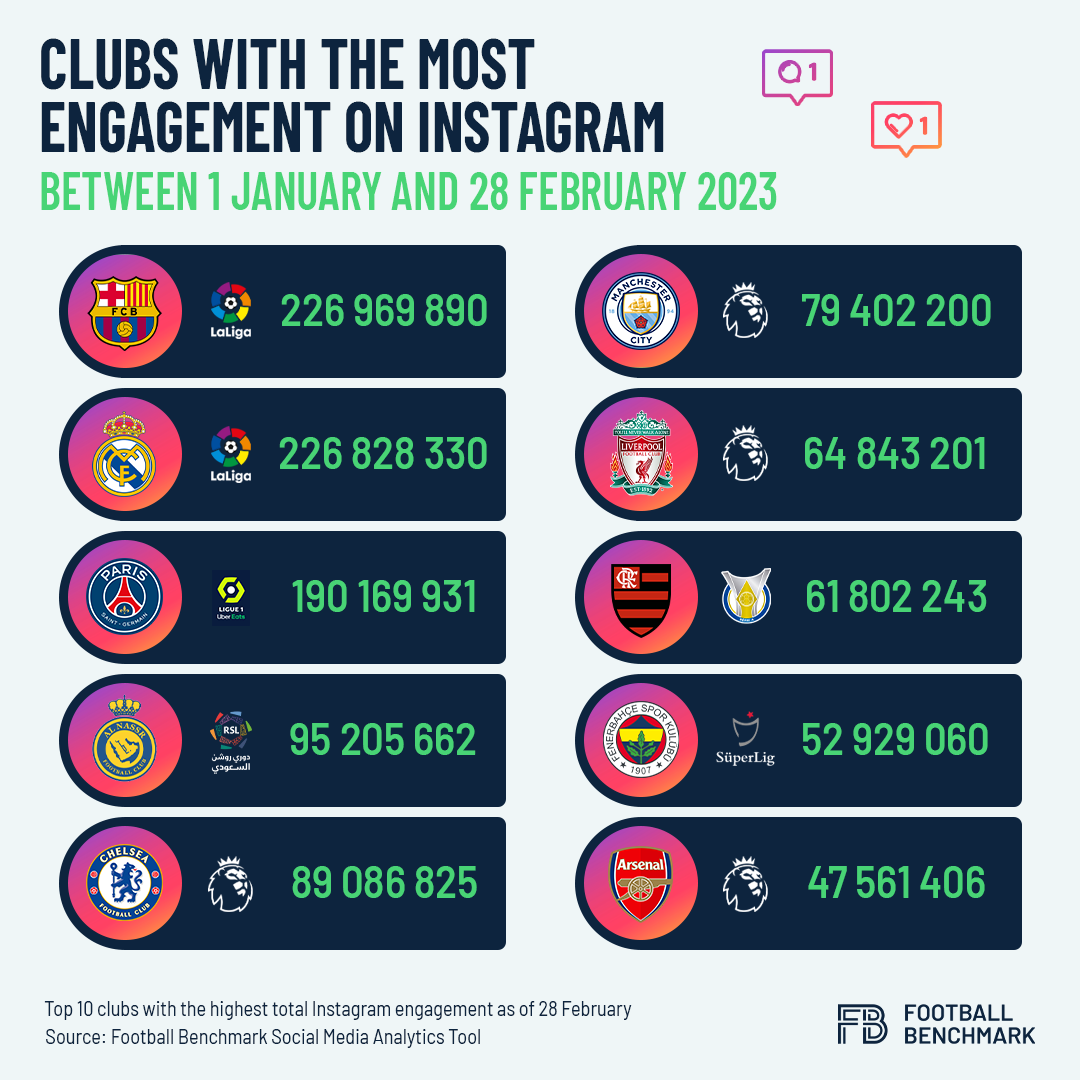
Brands in charge of the social media world
In conclusion, over the past two months the football industry has witnessed a significant surge in social media followers and engagement, thanks to major events such as the FIFA World Cup and the busy winter transfer market. A clear example of the impact of a superstar changing clubs is the case of Cristiano Ronaldo's transfer to Al-Nassr, which resulted in a remarkable growth in the club's social media presence.
From a communications strategy standpoint, clubs have seized the opportunity to build their brands on TikTok, targeting the younger generation of fans, but players, meanwhile, still prefer using Instagram as their primary communication channel.
Although Lionel Messi and Cristiano Ronaldo remain the most influential footballers on social media, emerging talents such as Kylian Mbappé and Vinícius Júnior are actively developing their brands, with aspirations of reaching the same level of success as the two legends.
Note: Social media data throughout our analysis is sourced from Football Benchmark’s Social Media Analytics Tool. Data from our analysis of the first two months of 2023 refers to the period between 1 January 2023 and 28 February 2023. The rankings are based on a current sampling of 800+ football clubs and 600+ football players whose numbers are continuously updated over the course of the year.


